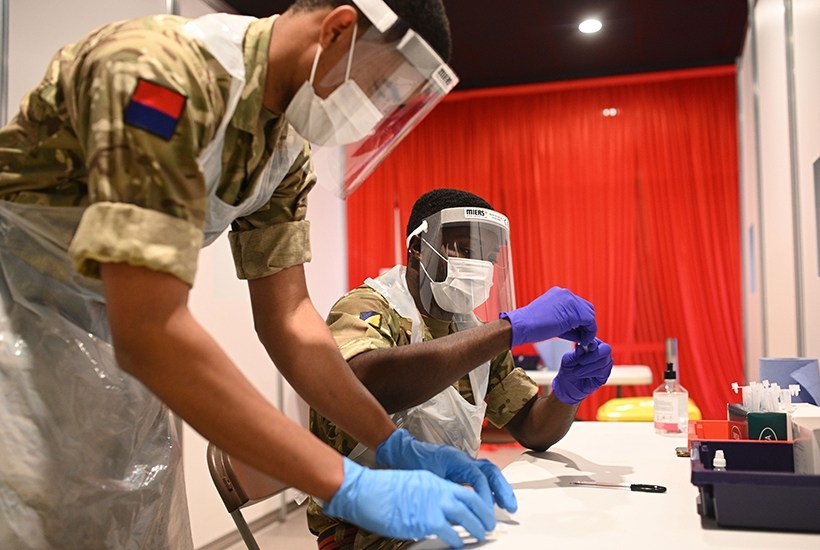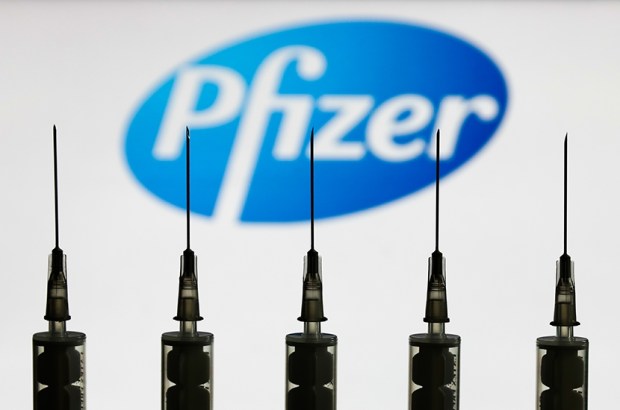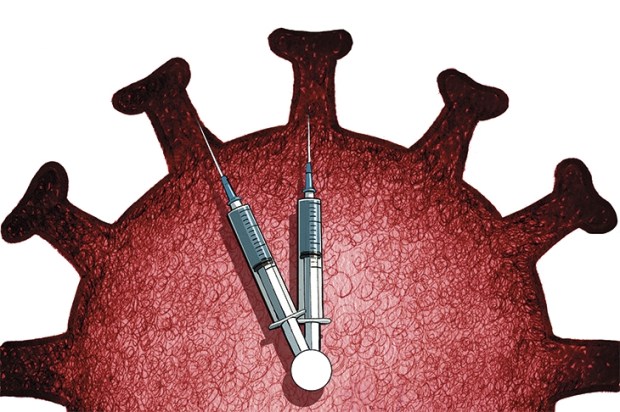In all the excitement about the Pfizer and BioNTech vaccine, it was easy to miss news of the other great hope for getting our lives back to some form of normal. Vaccines are not expected to have much impact for most of us this winter and it will be several years before they suppress Covid-19 globally. For now, a mass testing programme — not any jab — is probably the best chance of putting Covid back in its box. It has been piloted this week in Liverpool and it might be coming to us all in the near future.
No one’s exactly sure yet how it will work, but you could start by imagining a world in which every other morning we all self-administer a rapid saliva test at home, with the results available within ten minutes. If your test is clear, you go off to work, knowing that you will not infect others. If it shows you have the virus, you isolate, take a more accurate test for confirmation and then access a government support programme. If, say, you were to visit a care home, or play team sports, or go to the theatre, it would become routine to queue for a rapid test beforehand.
As the tests get more sophisticated, we might imagine a world in which departing travellers go through Covid-19 security by simply blowing into a test machine before entering the airport. Arriving passengers might be given ten daily tests to self–administer instead of having to quarantine. Grant Shapps, the Transport Secretary, is already talking about ending travel bans and instead having tests at airports, using fast-result technology that already exists.
It’s easy to scoff and say Britain will never manage it, but there is reason to hope. We’d need to issue up to ten million tests a day, some shared by everyone in a house. This sounds impossible, but so too, once, was the thought of hitting 100,000 tests a day — now we can do more than 500,000.
Our current approach is to use the lab-based polymerase chain reaction (PCR) test, which amplifies the genetic material in a sample sufficiently that it can be detected. While PCR is very accurate, it’s too slow and too costly for true mass testing. In Liverpool they’ve started using so-called lateral-flow tests, which deliver faster results. This takes us far closer to what we need for effective mass testing: something that works like a pregnancy test, with results within minutes.
A number of rapid tests, such as the Healgen antigen tests, already work in prototype and are being evaluated to see if they’re suitable for home use — though the scale-up to mass manufacturing for some is running late. (To declare an interest, I have invested in some of these.) These lateral-flow tests are highly specific, producing false positives — where people are wrongly told they have the virus — in only one in 1,000 tests. The question is how to make lots of them cheaply: one option would be ‘dip-stick’ tests without the plastic case. These need less specialist manufacturing and, according to Professor Michael Mina at Harvard Medical School, cost less than £1 each.
So yes, ten million tests a day sounds like a lot. But it could be cheaper than the £12 billion test, trace and isolate programme and certainly cheaper than lockdowns. If the technology works, and if the at-home tests can be created en masse, we should lose no time in getting them ready. We’d need to harness the British creativity we saw in the spring when all kinds of manufacturers — those who usually make anything from cars to clothes — produced PPE and 15,000 ventilators. The machines were, in the end, not needed, but the exercise shows how quickly the country’s resources can be mobilised.
How to get ten million tests a day to people who need them? The Liverpool pilot has had to use walk-in test centres and school classrooms as the tests are not yet certified for home use. But to distribute a monthly supply to around 25 million households, schools, care homes and offices will require a massive logistical process through the likes of Royal Mail and Amazon, which are already used for delivering the current home testing kits. By comparison, Royal Mail currently delivers about 3.3 million parcels a day.
When someone tests positive, what then? A recent official survey suggests that only one in five of those told to isolate by the current NHS Test and Trace programme fully complies. Part of the problem is that they don’t know for sure if they are infected (and statistically, from what we’ve seen so far, they’re probably not). In the words of a friend who had just self-isolated for 14 days without showing any signs of illness: ‘I am not doing that again.’
Mass testing can overcome this. The only people asked to isolate will be those who have tested positive, maybe confirmed by a second test. The government needs to help by offering an isolation package that might include financial support, remote medical consultation, help with tasks such as shopping, and early home treatment for high-risk cases. It will be more manageable with, hopefully, far fewer cases.
The queues and enthusiasm for rapid testing in the Liverpool pilot have shown the British public’s interest in mass testing. The Prime Minister has described it as a ‘moonshot’. Like the original American moonshot, the challenge is significant, but it is not inconceivable. If we succeeded, this would be a template for the West, a version of the much admired and successful Asian approach but tailored to our less tractable and more freedom-minded people. Mass testing could fill any potential gaps discovered in the effectiveness of vaccines. And after the problems with our last pandemic response, it could also position us well for any future virus.
Got something to add? Join the discussion and comment below.
Get 10 issues for just $10
Subscribe to The Spectator Australia today for the next 10 magazine issues, plus full online access, for just $10.
This article was written in a personal capacity.
You might disagree with half of it, but you’ll enjoy reading all of it. Try your first month for free, then just $2 a week for the remainder of your first year.














Comments
Don't miss out
Join the conversation with other Spectator Australia readers. Subscribe to leave a comment.
SUBSCRIBEAlready a subscriber? Log in